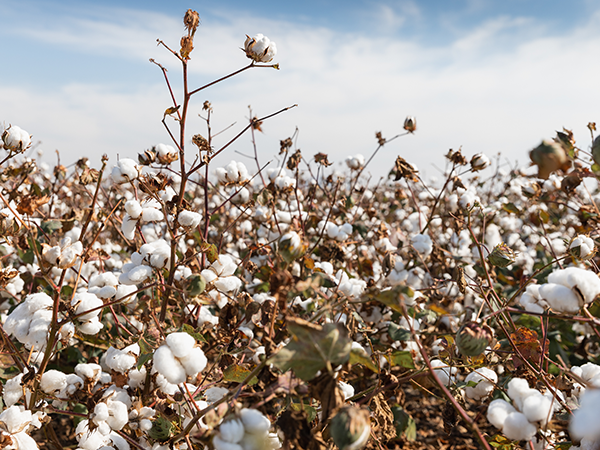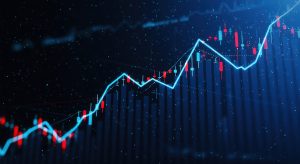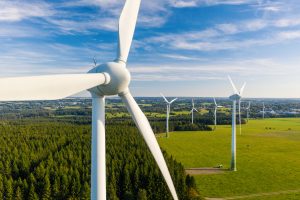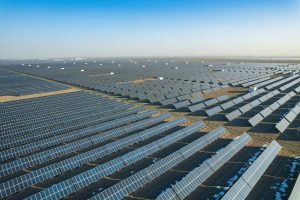The influence of climate-induced inflation

Over the past 12 months, market narrative has been dominated by inflation. This has been triggered by two notable events: the war in Ukraine and supply chain issues due to Covid. The impact of both these events on inflation appears to be easing as the costs of energy and manufactured goods are beginning to decline and aggregate headline inflation figures are falling across the developed world.
Many countries have experienced price rises due to higher energy costs. In the UK, electricity costs rose by 66.7% and gas prices by 129.4% in the 12 months to January 2023 1 . Almost 8 in 10 UK adults (79%) said a rise in their gas or electricity bills had caused their cost of living to rise over the past month 2 , when asked between 8 – 19 February 2023.
Trends are equally clear across the global landscape. The cost of energy for households around the world have increased by between 62.6% and 112.9% 3 since Russia’s invasion of Ukraine according to new research published in Nature Energy. Globally, it’s estimated that up to 141 million more people could be pushed into extreme poverty as a result of price increases 4 .
World food prices hit record highs in 2022. The UN Food and Agriculture Organization (FAO) food price index hit its highest annual level of record 5 with the war in Ukraine cited as the primary driver. Food and non-alcoholic drink inflation in the UK rose by 16.5% in the 12 months to November 2022 6 , the highest increase since September 1977 (17.6%).
There has, however, been a third driver of , whose influence poses potential enduring and far-reaching risks – climate-induced inflation. Unpredictable weather has caused large supply disruptions to both cash crops and food supplies causing concern for regulators, policy makers, investors, businesses and consumers. Some events are temporary in nature, and therefore, their ability to influence inflation is temporary. However, longer term changes in weather patterns and more frequently occurring extreme weather events increase the risk of inflation governed by the environment.
2022 cotton production is a good example. In Texas, the climate crisis fuelled a megadrought that plagued the state and resulted in 74% of planted cotton crops being abandoned 7 . This was the state’s biggest loss on record and one estimate put the cost at $2 billion 8 . In August 2022, Pakistan experienced devastating floods as a result of the climate crisis destroying half the country’s cotton crop 9 . Texas is the world’s third largest producer and exporter of cotton 10 . Pakistan is the sixth largest cotton provider 11 . With some countries and businesses boycotting cotton from China due to concerns with reported forced labour 12 , it’s very likely demand will outstrip supply in 2023, driving the price of cotton up.
Meanwhile, consumer demand for natural fibres continues to increase globally. According to 2021 research, 8 in 10 consumers say sustainability is important when purchasing clothing, with the percent increase in consumers saying this (from a 2017 baseline) up 70% in the UK, 63% in the US, 86% in China and 88% in India 13 . This presents a unique challenge for an industry already suffering from climate induced stress.
The big question is – are these weather events one offs or part of a longer-term trend? According to a report in 2021 from the Office of the Texas State Climatologist, Texas will be on the front line of extreme weather in coming decades 14 . The average annual surface temperature in Texas in 2036 is expected to be 3.0 °F warmer than the 1950-1999 average and 1.8 °F warmer than the 1991-2020 average 15 . West Texas is expected to see rising temperatures and decreasing precipitation, with a state-wide increase in the likelihood of extreme rain, 30-50% relative to the 1950-1990 baseline 16 . Wildfire risk in areas of high fuel load is also expected to increase.
Extreme rainfall in Pakistan has also increased, with historical weather records showing that heavy rainfall episodes have increased 75% in the past few decades 17 . Some climate models suggest this increase could be entirely due to human-caused climate change, although there are considerable uncertainties in the results. Either way, the weather is changing, and the knock-on impacts have the potential to be extremely destructive.
This could drive inflation across a number of key commodities long term. Cotton as an example is a good demonstration as it’s typically grown in areas of high climate vulnerability, and the ability for farmers to generate the types of yields that may have been successful historically is under significant threat. If extreme weather patterns continue, yields will inevitably underperform. Not just once, but potentially year on year.
These are not temporary “black swan” events with localised and temporary footprints. The environment is undergoing a seismic shift which has impacts not only on how it supports life on earth, but also requires monetary policy and responses to change. The International Monetary Fund (IMF) recently stated “climate change is likely to lead to more frequent and more severe supply and demand shocks that will present a challenge to monetary policy formulation… More research is needed to find a viable alternative monetary policy framework” 18 .
Investing against this backdrop is challenging. However, there are opportunities for investors looking to hedge against . Traditionally, real assets and gold have been seen as the best investments to do this. For an impact investor, however, commodities such as gold are problematic. Real assets in the form of wind and solar farms offer alternative opportunities to not only invest in the future, but also drive down energy prices for consumers. Equity investments into businesses restoring planetary boundaries and supporting community wellbeing can also play a significant role in creating future fit societies and businesses, whilst mitigating runaway price rises. This can be through investments in community clean energy provision, regenerative agriculture, education and healthcare provision and employability. Impact portfolios provide diverse opportunities for investors looking to future proof society.
For many, inflation is cyclical – favouring neither a temporary nor permanent bias. However, it can also be structural, responding to large scale changes, usually demographic. Climate induced crises will bring a new dynamic to our relationship with inflation. Being both temporary and permanent simultaneously, localised and structural, with many knowns and more unknowns, is an embodiment of the chaos theory. It is one of the biggest challenges facing investors today. Investing to create the resilience and the recovery that communities and ecosystems need now and in the future is more important than ever.
Footnotes
- Scroll to footnote
- Scroll to footnote
- Scroll to footnote
- Scroll to footnote
- Scroll to footnote
- Scroll to footnote
- Scroll to footnote
- Scroll to footnote
- Scroll to footnote
- Scroll to footnote
- Scroll to footnote
- Scroll to footnote
- Scroll to footnote
- Scroll to footnote
- Scroll to footnote
- Scroll to footnote
- Scroll to footnote
- Scroll to footnote




